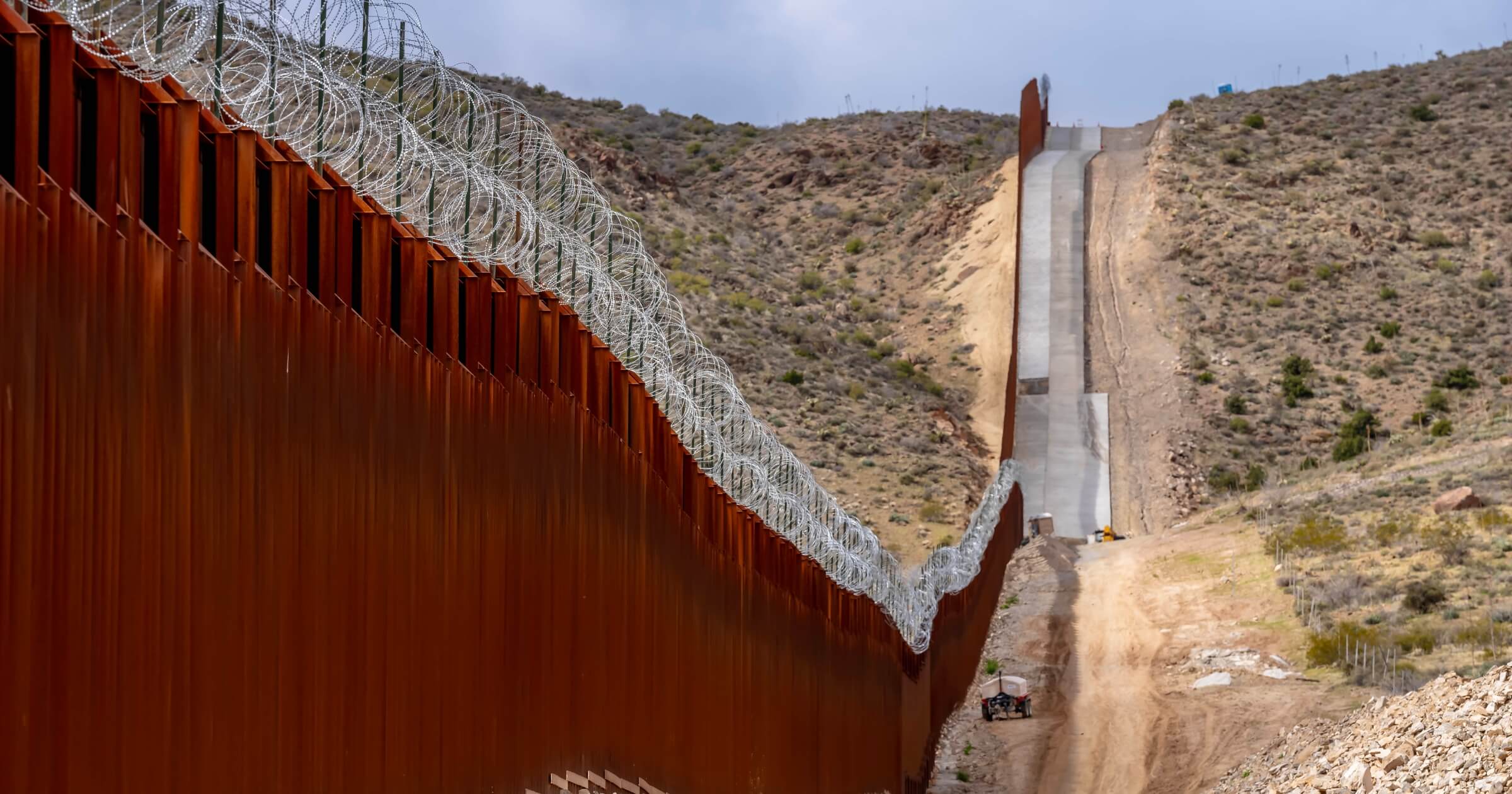The U.S. Department of Homeland Security (DHS) has awarded $4.5 billion in contracts to build about 230 miles of new border barriers along the southwestern United States. The work includes a mix of steel and waterborne barriers, patrol roads, lighting, cameras, and advanced detection technology, which together form part of the “Smart Wall Project.”
The Smart Wall Project is designed to combine physical barriers with digital tools to create a stronger border security system. It reflects a significant effort to modernize infrastructure along key points of the border in California, Arizona, New Mexico, and Texas, where older fencing and equipment need to be replaced.
Some of the work will take place on land, while other sections will strengthen water crossings. Crews will install new steel fencing, build patrol roads, and install lights and cameras to help agents monitor remote areas. The goal is to improve visibility at all hours and make it easier for patrols to react when something happens.
DHS has described the project as a combination of traditional construction and next-generation border management technology. The goal is to reduce illegal crossings, strengthen enforcement, and improve the safety of both agents and migrants.
Who’s doing the work to build the Smart Wall?
Ten construction contracts were awarded for the Smart Wall Project. BCCG Joint Venture received the largest share, worth more than $3.1 billion, to handle several major sections of the wall. The remaining contracts were distributed among regional engineering and infrastructure firms with experience in heavy construction and surveillance system integration.
To speed up work, DHS Secretary Kristi Noem issued two waivers that remove specific environmental and administrative review steps. These waivers apply to roughly nine miles in the San Diego Sector and 30 miles in the El Paso Sector of New Mexico.
The Smart Wall concept shifts from the traditional approach of building long stretches of fence to using technology-driven infrastructure. Beyond the fencing, the Smart Wall will use motion sensors and live-feed cameras to detect movement and notify agents immediately. “The Smart Wall means more miles of barriers, more technology, and more capability for our agents on the ground. This is how you take control of the border,” CBP Commissioner Rodney Scott said in a statement.
The average cost per mile is around $19.6 million. That figure has sparked debate, with some backing the project for safety reasons and others questioning whether the money and materials could be better used elsewhere. “Border walls just simply don’t work,” said Pedro Rios of the American Friends Service Committee, after Noem issued the waiver. “They’re not a useful way of deterring migration. They just complicate the crossing and add to how people are affected, harmed, and die as a result of border walls. And it’s not a solution.”
For construction and engineering firms, the contracts mark one of the largest federal infrastructure projects in 2025. The effort is expected to create thousands of jobs across the Southwest and bring new opportunities for companies specializing in large-scale civil works, surveillance technology, and sustainable materials.
As construction moves forward, the Smart Wall will test how well innovation, safety, and cost optimization can work together to manage one of the world’s most complex borders.
Stay up to date on major U.S. infrastructure projects and construction news by subscribing to our newsletter.


